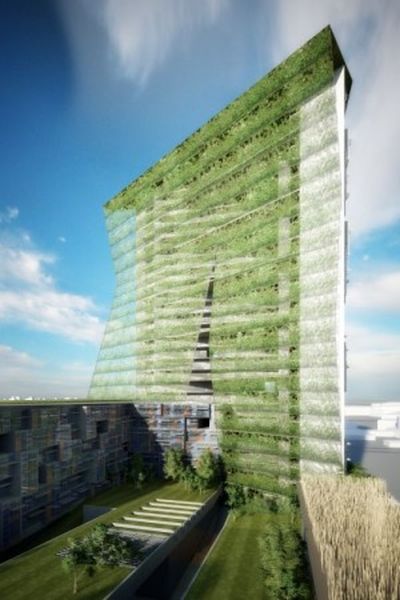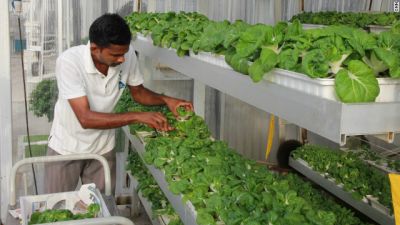By the fifties of the current century, the world population would reach over 9.5 billion. Unless we think out of the box, we are to face dramatic shortage in food, arable land, and fresh water. Dr. Dickson Despommier of Columbia University, along with his students, developed an innovative and smart solution; vertical farming.
Vertical farming is about transferring agriculture from horizontal farmlands to vertical skyscrapers in rural areas, where most of the Earth's population will be living in the decades to come. Instead of implanting seeds in soil, vertical farms would rely on hydroponic* systems, which are sufficient to grow almost all terrestrial plants.

Carrying out a vertical farm project necessitates bringing together multi-disciplinary technologies needed for minimizing waste and energy use, facilitating recycling, and developing high-tech irrigation systems. Moreover, accurate monitoring systems are needed to ensure the needed temperatures are maintained for different crops.
The key advantage of vertical farming is space, for one indoor acre produces an equivalent of 4 to 6 acres outdoors; thus, we need not worry about running out of arable land. Furthermore, similar to green houses, different crops can be grown all year round as the vertical farms’ operation systems control temperature and humidity levels.
Using sophisticated water recycling systems, vertical farming would contribute to saving fresh water, 70% of which is nowadays used for traditional irrigation, rendering it unusable for drinking as a result of contamination with fertilizers, herbicides and pesticides.

Further to this, it would not even necessitate using pesticides as long as the building is carefully monitored. Vertical farming is also likely to eliminate the pollution caused as food is trucked or shipped across borders to reach the consumers; alternatively, people will get their freshly harvested foods from the farm next door.
The major criticism directed to vertical farming is that it would eliminate jobs of conventional farmers. However, such an idea, on the contrary, would create jobs; thousands would be required to build, operate, and maintain these vertical farms, let alone harvesting and packing the grown plants. Dr. Despommier further suggests that lands that have been used for horizontal farming could be forested, constituting a major counterweight to global warming.